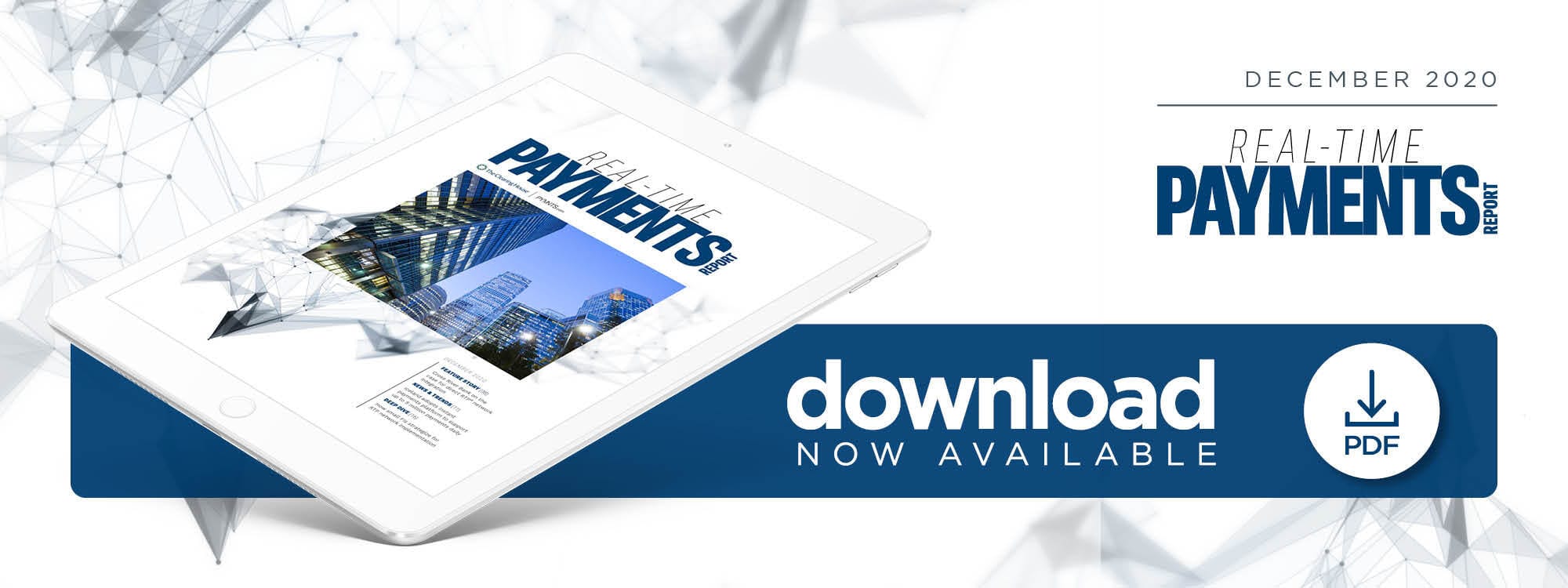Cross River Bank On The Case For Direct RTP® Integration

Small financial institutions (FIs) that directly integrate with real-time payments (RTP) must do more work than their counterparts that turn to third parties for RTP access. But the initial investment is worth the cost, says Jesse Honigberg, technology chief of staff at Cross River. In the Real-Time Payments Report, Honigberg explains how direct integrations give banks the control needed to launch new, creative, RTP-powered experiences.
Instant payment systems have been launching in countries around the world as financial institutions (FIs), governments and various payment organizations seek to introduce technologies that can sate businesses’ demands for more streamlined exchanges of money with plenty of payments data. Building an effective payment rail is only part of the battle to bring business-to-business (B2B) commerce up to a real-time pace, however. An extensive — if not unanimous — swath of the financial sector must also tap into that rail in order for it to be effective, because buyers will find little advantage in a transaction tool if only a small portion of their vendors are able to use it.
Nations’ paths toward real-time payments ubiquity therefore depend on FIs, FinTechs and other players adopting these systems and then extending access to other such firms. PYMNTS recently spoke with Jesse Honigberg, technology chief of staff at community bank Cross River, to discuss how the U.S.-based FI navigated its implementation of the RTP® network and how it strategizes around extending access to its FinTech clients.
Direct Connections
Financial players can either integrate directly with payment rails or gain access by going through third parties that already have those integrations — and deciding between these two approaches is no small choice. Companies that want to integrate directly are lining themselves up for a major technical undertaking, Honigberg said. That process involves a variety of steps, including working with the RTP API, making changes to internal company processes and thoroughly testing functionalities. Companies develop programming connections into the rail and also have to meet certain requirements so The Clearing House will certify them for using the system — a rigorous process, all in all.
“Integrating to the network required certification in multiple environments, with multiple different test cases,” Honigberg said. “It was quite a bit of work. Be prepared for some complexity, but with the right level of tech competence, it can be done.”
Such challenges — while a serious consideration — are not insurmountable, he added. Cross River had five employees consistently working on the project for five months to onboard it to the RTP network. The bank also sought to keep this workload manageable by focusing first on facilitating specific, clearly defined use cases rather than attempting to enable everything all at once. That meant launching capabilities to allow clients to send and receive funds via the RTP network, but holding off on adding functionalities such as request for pay, which was not widely supported until later, for example. Prioritization and gradual deployments can enable FIs to start serving clients quickly without biting off more than they can chew.
Direct integrations can entail more work than turning to third parties for access, even with such a controlled approach. FIs trying to decide between direct and indirect access to the rail must weigh multiple factors, including their own technical capabilities as well as the goals driving them to adopt the new payments system. Cross River decided that having maximum control over how it uses the RTP network warranted the decision to integrate directly, Honigberg noted. This kind of access could set it up to leverage the rail in unexpected ways down the line.
“Another bank is probably going to end up using a [third party like] FIS or Fiserv or Jack Henry … and will have to ride through their rails to get access to the network,” he said. “In many ways, the other people in this space are handicapped by a legacy relationship with one of the big tech houses … [whereas], at Cross River, I called up TCH and said we want to get on the network. We control our own destiny.”
Relying on a third party means being dependent on that intermediary, which was something the FI did not want to endure – even if it meant being able to hand off much of the integration work.
Onboarding Clients
Cross River has had to make similar considerations when determining how to provide its financial clients with RTP access. Honigberg regards the instant payment rail as a flexible tool that can support a wide variety of applications. The FI therefore wanted to be sure that when it provided back-end support to facilitate clients’ use of the rail, it did so in a way that allowed them to have a high degree of control in how they leverage the RTP network to create experiences for their end customers. That priority inspired Cross River to offer clients instant payments access via a set of APIs.
“The entirety of the platform we offer for RTP is all API-driven,” Honigberg said. “When we were building [into] RTP specifically, we knew there was such lack of definition. While other [payment networks] were extremely prescriptive of what the experience was going to feel like, TCH was almost the antithesis of that. We didn’t want to lock our clients into a specific experience that felt like X, Y or Z. We wanted … to give them the most control over the user experience as possible.”
FinTechs, FIs and other businesses are increasingly exploring the influence of instant payments and what adoption of real-time rails can mean for them. Bringing forth various business applications for RTP and encouraging frequent use of the rail will depend on its access becoming widespread. Firms will have to determine their implementation strategies and whether going direct will best suit their needs.
